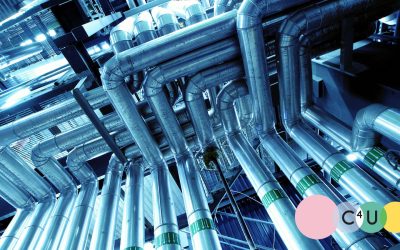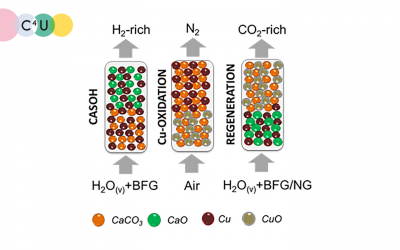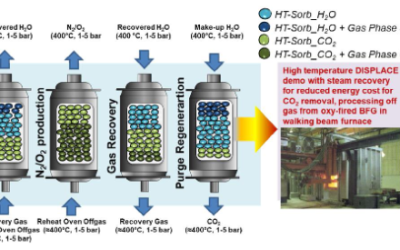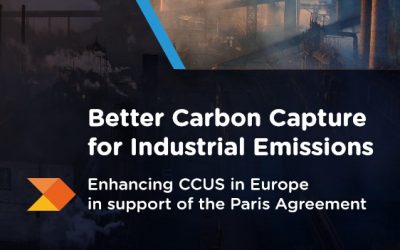Publications
Perspectives on Future CCUS Infrastructure Design
Authors:Jude O. Ejeh, Ahmed Z. Yousef, Peter Bugryniec, Mathew Dennis Wilkes, Richard T. J. Porter, Sergey Martynov, Haroun Mahgerefteh, Solomon Brown
Journal:Proceedings of the 16th Greenhouse Gas Control Technologies Conference
Lab-scale experimental demonstration of Cas-Cu chemical looping for hydrogen production and in-situ CO2 capture from a steel-mill
Abbas, S. Z., Fernández, J. R., Amieiro, A., Rastogi, M., Brandt, J., & Spallina, V. (2022). Lab-scale experimental demonstration of CaCu chemical looping for hydrogen production and in-situ CO2 capture from a steel-mill. Fuel Processing Technology, 237, 107475. Find the publication here! Abstract In the present work, a lab-scale packed bed reactor has been used to decarbonize mixtures of inlet gases simulating the typical composition of blast furnace gases (BFG) and convert them to...
Lab-Scale Experimental Demonstration of Ca-Cu Chemical Looping for Hydrogen Production and In-Situ Co2 Capture from a Steel-Mill
This paper summarises lab findings on decarbonizing mixtures of inlet gases to simulate the composition of blast furnace gases from steel production and convert them into hydrogen-rich streams.
Application of the Henry’s law model for prediction of the vapour-liquid equilibria in impure CO2 streams
This report evaluates the impact of CO2 streams impurities on the formation of solid CO2 in pipelines for realistic venting decompression scenarios.
DISPLACE Technology to Efficiently Decarbonize Steel Industry
This paper presents the application of an innovative adsorption process called DISPLACE to capture CO2 from the steel plant flue gases. In this process, the CO2 is adsorbed onto the sorbent due to high partial pressures of CO2 which is then displaced by H2O adsorption on shared adsorption sites. The process is for the first time applied to steel plant, therefore a preliminary process optimization must be carried out focusing on the feed pressure as main parameter: the higher the pressure, the...
The Work and Preliminary Results of the C4U Project on Advanced Carbon Capture for Steel Industries Integrated in CCUS Clusters
This report evaluates the impact of CO2 streams impurities on the formation of solid CO2 in pipelines for realistic venting decompression scenarios.
CO2 MEA Capture: A Gaussian Process-Based Global Sensitivity Analysis
In this work, we present a variance-based global sensitivity analysis (GSA) using Gaussian process (GP) surrogate models to calculate the semi-analytic Sobol’ indices for a carbon dioxide (CO2), post-combustion capture (PCC) process. Using the open-source ROM-COMMA software library, the generated GP surrogate model enables accurate process output prediction, and calculation of the semi-analytic Sobol’ indices for GSA. We apply this methodology to a case study of a CO2 PCC process with 30 wt.%...
C4U at Greenhouse Gas Control Technologies Conference
Members of the C4U consortium team will present the project and findings at the 16th Greenhouse Gas Control Technologies conference.
Preliminary Techno-Economic Evaluation of Blast Furnace Gas Utilisation with Ca-Cu looping Cycle Integrated with CO2 Separation by Partial Condensation
The iron and steel (I&S) industry, an energy-intensive sector and one of the significant contributors to global CO2 emissions accounted for approximately 2.6 Gt of direct CO2 emissions in 2019. BFG has a higher ratio of CO and CO2 compared to other I&S off-gases (coke oven gas and basic oxygen furnace gas). On the other hand, BFG has lower LHV than the other two off-gases due to higher N2 and CO2 concentrations. Therefore, effective CO2 removal from BFG is more cost-effective than...
Towards a CO2-neutral steel industry: Justice aspects of CO2 capture and storage, biomass- and green hydrogen-based emission reductions
A new C4U paper explores just transition aspects of various technologies to reduce emissions from steel-making.
Henry’s Law Constants and Vapor-Liquid Distribution Coefficients of Non-condensable Gases Dissolved in Carbon Dioxide
Read this new technical paper on Henry’s constants for six non-condensable gases.
Better Carbon Capture for Industrial Emissions – Enhancing CCUS in Europe in support of the Paris Agreement
This new policy brief argues that carbon capture, use and storage should be included in the list of technological priorities in EU countries’ climate policies.












